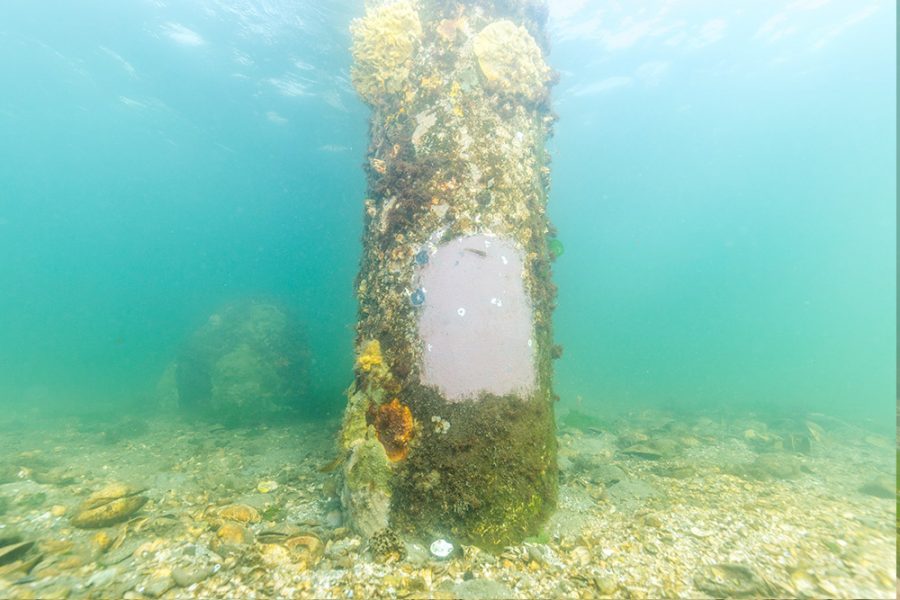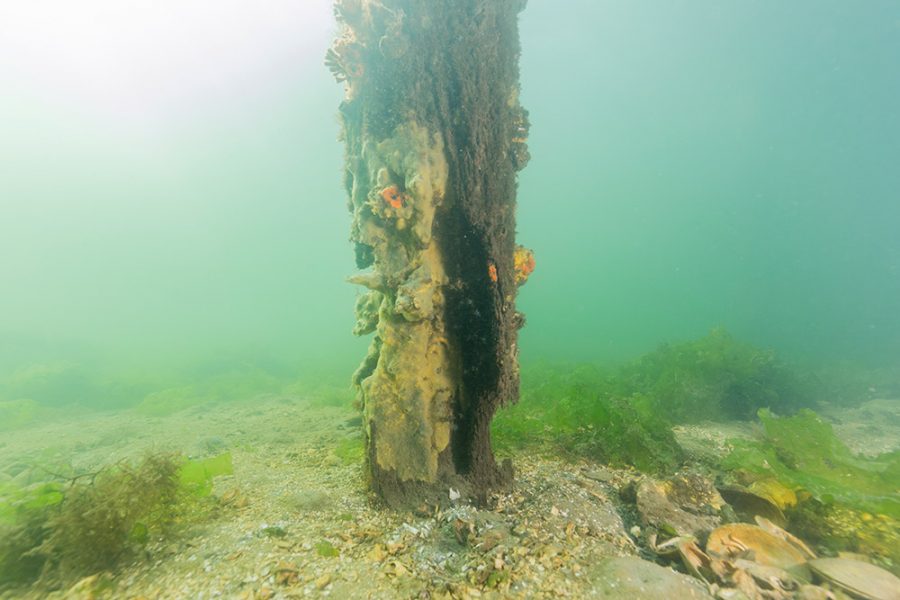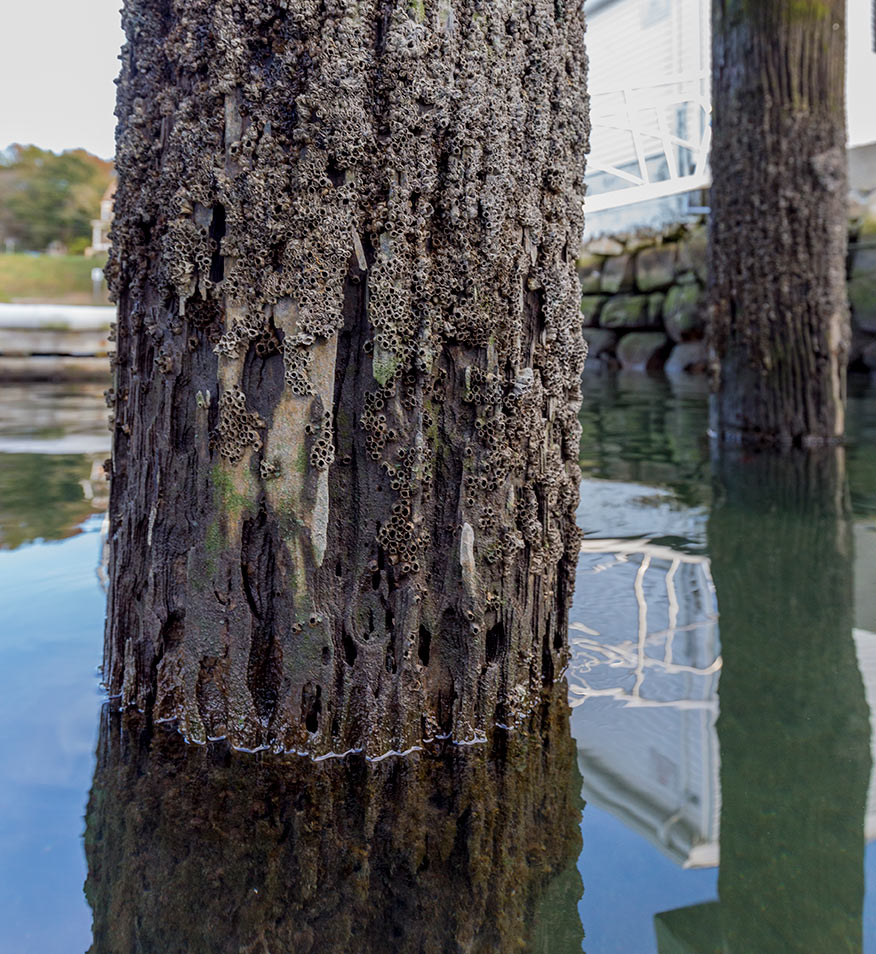Composites vs. Wood
How do composites stack up against wood?
 20-year-old fiberglass pilings
20-year-old fiberglass pilings Rotting wood pilings
Rotting wood pilingsVulnerable to rot and insects: Traditional wood pilings such as oak are exceptionally vulnerable to water damage, including rot and attacks from wood-boring insects. While untreated wood pilings often need to be replaced periodically, Pearson Pilings last generations.
Environmentally damaging: Treated wood, such as pressure treated Southern Yellow Pine lasts longer than untreated wood. But the very chemicals that protect it from insects and rot can also leach into the water and soil, harming fragile waterfront ecosystems. More municiplaitites are prohibiting the use of treated wood in waterfront construction. Pearson Pilings are safe for the environment and for you.

Structural irregularities: The irregularities in the diameter of these natural elements also make the pilings susceptible to damage in the winter due to the rising and falling levels of ice. “Since wood pilings are not perfect cylinders, ice locks onto the irregularities,” explains contractor Brendan Lund. Over time, the rise and fall of the frozen water level can effectively pull the dock out of the ground. Since Pearson Pilings have a smooth surface, there is less potential for uplift.
More expensive over time: While the cost of each wood piling may be comparable to the price of a composite fiberglass piling, over the life of your dock, pier or home, wood can end up costing three times more! Since wood lacks the strength of composite pilings, it takes more wooden pilings to bear the same load, increasing upfront costs. Since wooden pilings need to be replaced more frequently, they increase the overall cost of the project over time. Strong, lightweight, long-lasting Pearson Pilings save you money.
See Pearson Pilings in action.
